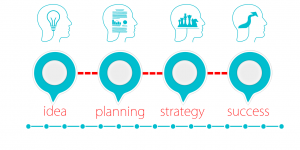Configuration Management is a technical management discipline that is used to track changes in complex systems development, and was originally introduced during the 1950s by the U.S. Department of Defense.
CONTENT
- What is the goal of project configuration management?
- How to run project configuration management
- How to run configuration management: Be ready from the get-go
- How to run configuration management: Establish a clear baseline
- How to run configuration management: Consider a design and product configuration
- How to run configuration management: Record the owner of the documents
- How to run configuration management: Record plan change
This system received several highly technical names over the years, until consolidated guidance was published in 2001 that established the technical management system now known as configuration management.
Project configuration management is the process of tracking and controlling changes to important project documents and products. This includes project deliverables and project management documents, such as the project schedule document.
Everything that requires tracking through the project change control system is specifically identified in a project’s configuration management plan.
These documents are not generally open to change by anyone at any time.
Instead, all changes are documented and approved, only when strictly necessary, within a project’s configuration management plan.
Configuration management provides documentation that explains why changes to the project occurred, who approved those changes, and who is the assigned change owner.
What is the goal of project configuration management?
The goal of configuration management in a project is therefore to manage the project’s fundamental restrictions of scope, time, cost, and quality.
Within a project, the purpose of configuration management is to identify, monitor, and protect project deliverables from unauthorized changes.
Configuration management is a practice that provides accurate control over project resources by enabling the project manager to:
- Specify product versions in use and existing, and store information about their status, who owns them, and the relationships among them
- Maintain an up-to-date record containing this information
- Monitor product changes Ensuring that modifications are implemented only with prior approval of the designated authorities
- Check records to ensure they contain the authorized products
Within a project, the role of configuration management is to provide:
- Mechanisms for management, traceability and control of all project products; keep the files of every product of a project once they have been checked for their quality, controlling their access and keeping records of their status
- Store each product safely and securely in the most appropriate way, this will include managing access to the product in such a way as to prevent damage to it and to safeguard it from inappropriate access
- A system for recording, tracking and archiving every issue related to the project
How to run project configuration management

Now let’s look at the 5 steps to properly run a project’s configuration management.
How to run configuration management: Be ready from the get-go
The most important guideline is to begin configuration early in the project lifecycle. The project manager should assess the potential for smoothness in the early stages and create the appropriate scaled configuration management system during project planning rather than halfway through execution.
How to run configuration management: Establish a clear baseline
It is very important to establish a clear baseline plan, i.e., the project description as defined at the beginning of the project, as well as to document the different versions during development and the final phase when the project will be released.
How to run configuration management: Consider a design and product configuration
You have to consider configuration management for two areas:
- project management changes
- content or product changes.
How to run configuration management: Record the owner of the documents
Another best practice is to document who owns the different parts of the project. When these owners change and the next individual brings a new perspective into the project, normally there is a temporary increase in the rate of change. Stakeholder support for changes to project and the configuration management process are therefore crucial to system success. With CM processes, change acceptance decisions should be taken at the appointed and recognized change control committee level.
How to run configuration management: Record plan change
Documenting plan changes can be done with simple tools in the case of the simplest projects or with specific project management software. In order for this to work effectively, the plan document must be created with particular consideration.
Where this is the CM method, the rule of thumb is that nothing in the plan should be changed unless it is recorded in the change documentation, thus tracking all project management and any changes.
Each modification is assigned a unique ID, the date of the modification, a reference to the section number, and a description are recorded. Finally, the change to the project or product is described in all necessary details.
Bottom line, we can say that changes are and will continue to be an inevitable part of any project’s design and implementation.
Even the best series of design plans does not guarantee that a particular project will not undergo numerous changes.
This is particularly true when the scope involves a large-scale, multi-contract, multi-phase complex project.
The primary causes of project changes involve changes in design standards, changes in project scope, unforeseen complexities, or difficulties and delays in project implementation.
Project managers, to help control the impact these changes can have on cost, schedule, and performance, are beginning to see the value in using configuration management principles.




